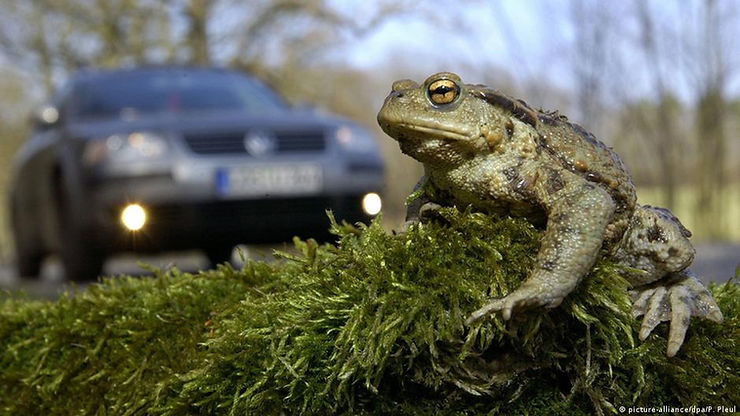By: Annie Huang
On Friday, July 22nd 2022, scientists discovered that some frogs’ tiny ear canals make it difficult for them to orient themselves. One example of this is shown in Brachycephalus frogs, also known as pumpkin toadlets, which live in southern Brazil. They can leap into the air but have trouble landing.
In most cases, it’s because some frogs just can’t stick their landings. After leaping high into the air, pumpkin toadlets usually tumble as if being flung by a toddler. Afterwards, they usually backflip, roll, or cartwheel and then plummet to the ground. Often, they end up belly flopping or crash-landing onto their backs.
Richard Essner, Jr. a zoologist who works with vertebrates, animals with backbones, at Southern Illnois University Edwardsville told local reporters, “I’ve looked at a lot of frogs and these are the weirdest things I’ve ever seen,”
Essner and his colleagues now propose an explanation for why the tiny frogs are such clumsy jumpers. It appears the animals lack the equipment needed to sense small changes as they rotate. The team described this new analysis in the June 15th issue of Science Advances.
When Essner saw videos of the pumpkin toadlet’s awkward aerial maneuvers, he was so shocked that he hopped on a plane to study the animals as part of a research team in Brazil.
He discovered that the frog is as small as a human’s thumbnail and can be extremely tricky to find in the wild. Therefore, scientists listen closely for their high pitched, buzzy calls. Then they scoop up leaves in the area, hoping to nab a few toadlets in the process.
While the scientists do this, the team in the lab uses high-speed video to record more than 100 tiny frog jumps. The videos suggest that toadlets have issues tracking their bodies’ motion. Typically, fluid sloshing through bony tubes in the inner ear helps sense their body’s position, so this reveals that the pumpkin toadlet’s tubes are the smallest ever recorded. Other studies have also shown that the tiny tubes don’t work all that well. So their fluid has a hard time flowing freely, Essner says.
So if the frogs can’t sense how they’re twirling in the air, Essner reasons, they might find it extremely tough to prepare for landings. It is possible that bony back plates may offer some toadlets a bit of a crash protection as well, but these animals may just stay grounded for safety.
Link: https://s3.amazonaws.com/appforest_uf/f1658689212695x116332403836026940/Why%20these%20jumping%20toadlets%20get%20confused%20mid-flight%20_%20Science%20News%20Explores.pdf











